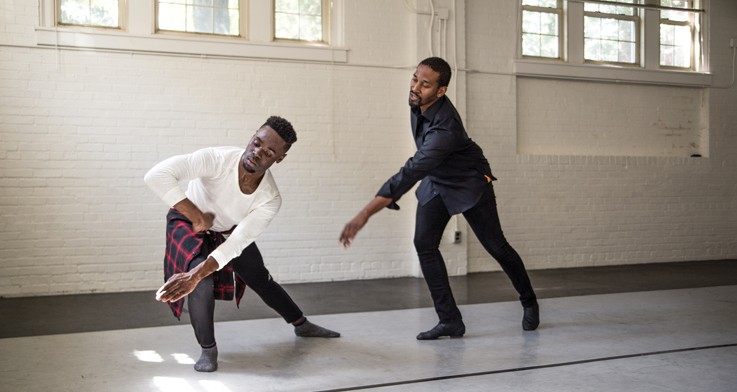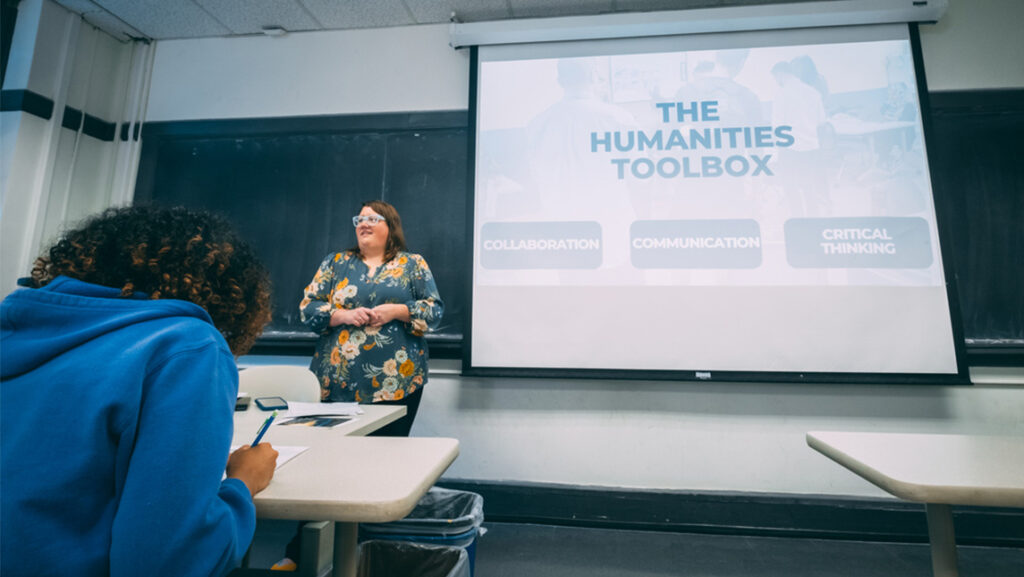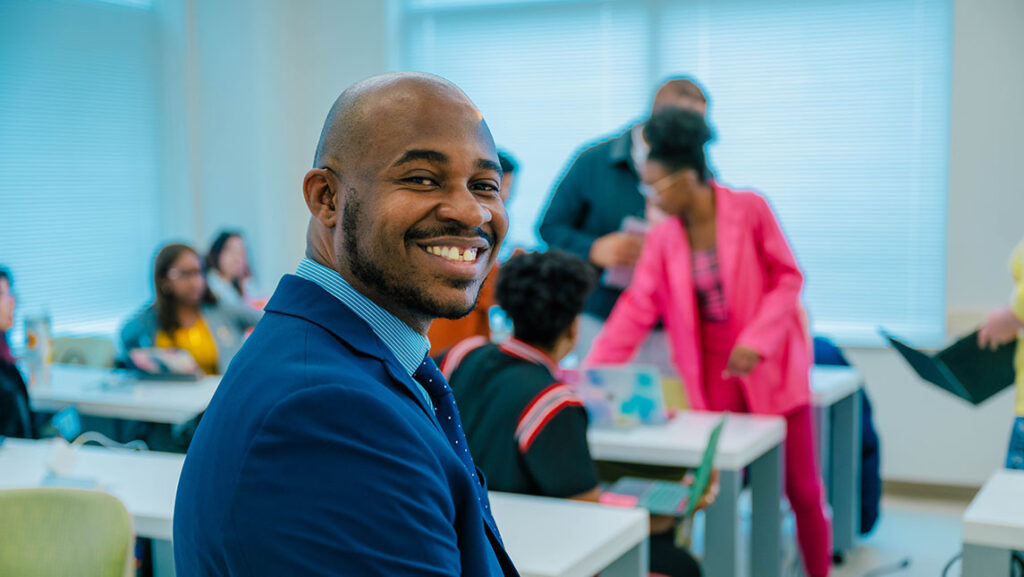Before his untimely death, Duane Cyrus’ uncle helped save the lives of 93 servicemen drowning in the icy waters off Greenland during a World War II rescue mission. Now, Charles W. David Jr.’s heroism is the inspiration for the cutting-edge, research-based dance production “Comanche: Hero Complexities.” The gala performance by Cyrus and his visual and performing arts collective, Theatre of Movement, premieres Friday, Sept. 22, at 7 p.m. in the UNCG Auditorium.
“‘Comanche’ is something that’s really been around me my whole life,” said Cyrus, associate professor of dance at UNCG.
The performance explores themes of rescue, self-sacrifice, and heroism when black male bodies are positioned in contemporary spaces. How do black contemporary bodies simultaneously relate to past acts of heroism while negotiating present-day dilemmas through art?
In 1943, David, a Caribbean-American United States Coast Guardsman, was working as a Steward’s Mate First Class in the kitchen of the Comanche, a Coast Guard cutter (coastal patrol boat). A German U-boat torpedoed the Army transport ship, The Dorchester, of nearby servicemen, and Comanche responded to the rescue mission. Since the military was segregated at the time, David was not required to participate in the rescue. But he volunteered, and helped save the 93 men, including the Comanche’s executive officer who contracted hypothermia during the mission. A few days later, David passed away from prolonged exposure to pneumonia.
Cyrus said he never fully comprehended his uncle’s sacrifice until 2013, when he attended a ceremony where the U.S. Coast Guard commissioned a cutter in Key West, Florida, in David’s name. It dawned on him that David’s story was extremely fertile ground for creative work.
“I realized that while I continue as a creative artist, I could use research to connect students to important historical legacies and encourage them to do their own research – to delve deeply,” said Cyrus, a 35-year-veteran of dance.
With support from Dr. Peter Alexander, dean of the College of Visual and Performing Arts, Provost Dunn, Lawrence Jenkens, associate dean, Janet Lilly, head of the dance department and a Strategic Seed Grant for vibrant communities from the Office of the Provost, Cyrus began his artistic exploration of the past. Theatre of Movement encourages collaboration among a group of contributing artists, rather than a more traditional division of labor among the choreographer, film director, dancers and designers.
His dancers are primarily trained in modern, contemporary and hip hop. But they are not bound by any one dance discipline.
“Technique is important to work on yes, but we don’t stop there – That’s the foundation,” Cyrus said. “These dancers are theatrical conveyors of ideas beyond their technique. And I’m very proud of them.”
His quest took him to Cape Charles, Virginia, New York, Washington, DC, Antigua and China. Over the course of his research, he met with a Coast Guard historian and reviewed documents related to his uncle’s service. He read about African Americans in the military, and conducted interviews with family members and subject matter experts.
Cyrus and his team conducted workshops and engaged the community in his research questions: “What does it mean to be a problem and a savior at the same time? How do contemporary black bodies negotiate the dynamics that arise when intention meets perception? What does a black man look like? What is heroism?”
Workshop participants – made up of professionals and nonprofessionals, dancers and artists – answered through sketches, interviews and other creative outlets. Cyrus said he wants to demonstrate the positive imagery of African American males on a range of levels.
“My goal through ‘Comanche’ is to show through multidisciplinary talent how to defy stereotypes,” he said. “It’s an open lens for us to see ourselves.”
Along with an appreciation of the legacy of his uncle, Cyrus said he hopes the audience walks away with a broader view of people.
“From seeing this concert of multidisciplinary art, I hope they would have a broader perspective not only of the diversity of African-American men,” Cyrus said. “but the diversity of us all to realize that within one group there are many.”
By Elizabeth L. Harrison and Dawn Martin
http://ure.uncg.edu/prod/cweekly/2017/09/12/comanche-hero-complexities-premieres-sept-22/



